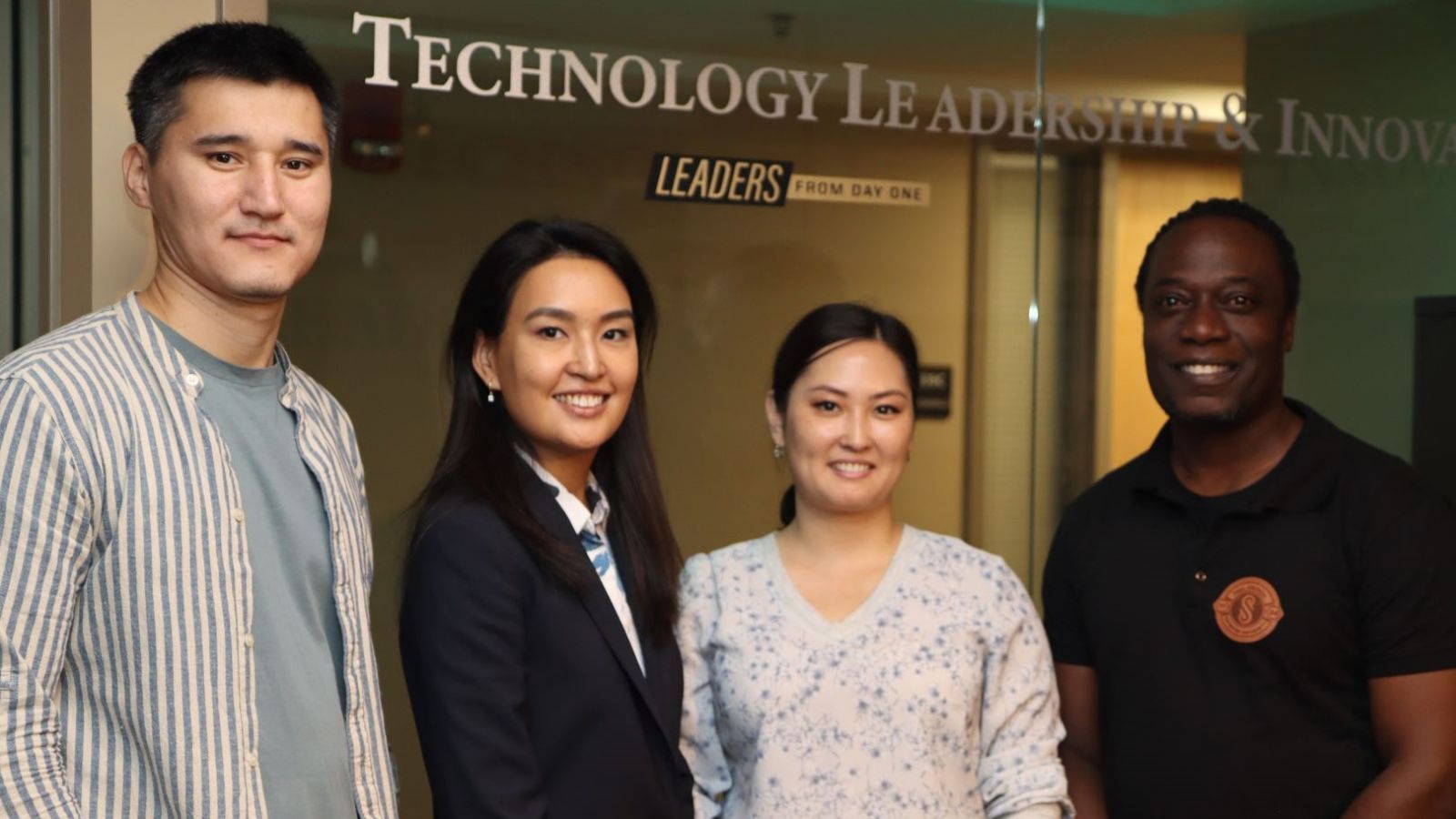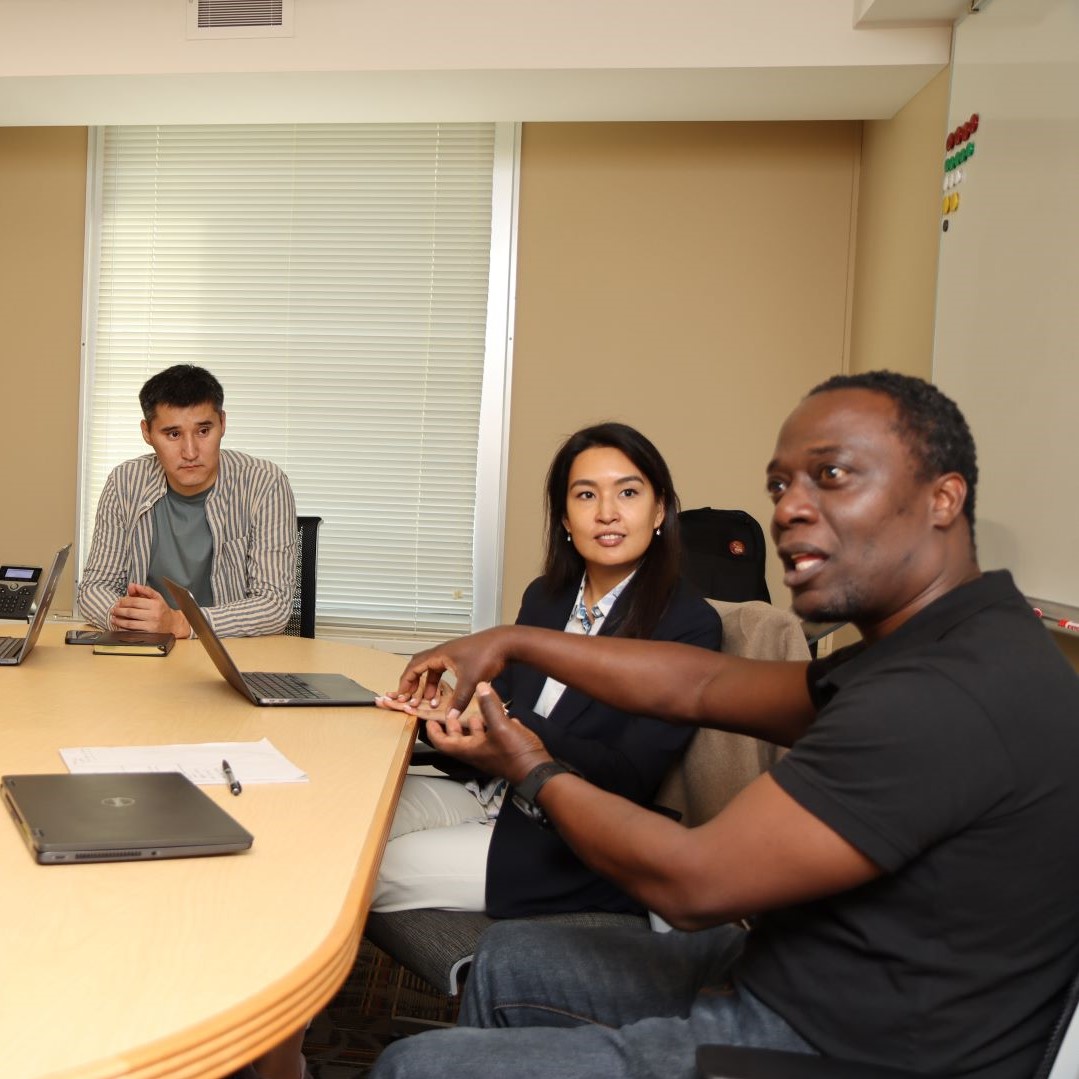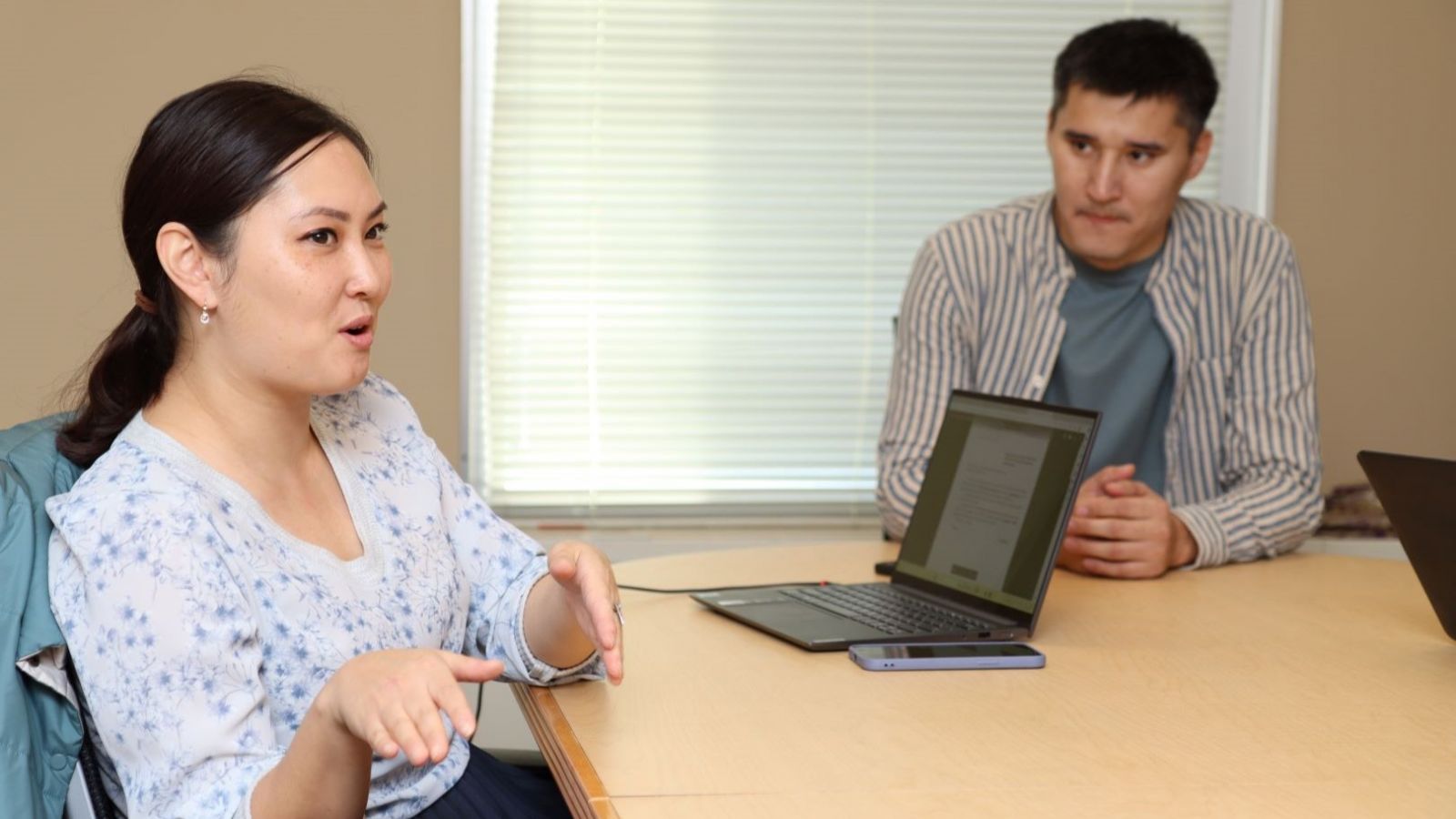
Last January, Paul Asunda, associate professor of technology leadership and innovation and curriculum and instruction, started work on a project in Kazakhstan and funded by the U.S. Embassy.
The project’s mission, which ran until February 2024, was to cooperate with the country’s university system to improve teaching methods and outcomes in STEM courses. A year later plus an initial round of data and discoveries from Kazakhstan, that partnership is bearing novel outcomes.
Sourcing new ideas from Purdue Polytechnic
“Just the fact that my colleagues from Kazakhstan have come to see Purdue, and to come see how we run our classes here, is such an encouraging sign,” Asunda said. “I think it would be ideal to continue developing this partnership well into the future.”
Three Kazakhstani partners on the project came to Purdue in November 2023 to visit Asunda, who hadn’t seen them in person since his last visit to Kazakhstan’s Aktobe region in May 2023. Those three partners were:
- Maira Aldiyarova, director of international cooperation at Zhubanov University
- Anarbek Dauletyarov, department chair of ecology at Zhubanov University
- Aizhan Kassymova, deputy director of the Institute of Automation and Information Technologies at Satbayev University

Satbayev and Zhubanov were intentionally chosen as two ideal universities for this project, as they represent the breadth of the university system across Kazakhstan. Satbayev is a large, centralized technical university with a large student population, and Zhubanov is a multidisciplinary school designed to serve a single region in the western part of the country.
Asunda’s proposed solutions to increase STEM educational effectiveness ranged from small- to large-scale strategies, and targeted students and teachers as discrete groups with their own unique needs and goals.
“For the students, sometimes Paul’s strategies for increasing classroom engagement were as straightforward as making the context personal,” Kassymova said.
“If students are dealing with a chemistry question about cleaning up an oil spill, why does it have to be in some generic location? Instead, Paul would revise the question to say that the spill was in the Caspian Sea [bordering the southwest of Kazakhstan]. Suddenly, the question is relevant and personal to the students.”
Asunda emphasized that the best STEM education requires students to be “proactive and innovative in solving problems.” Bringing together the “context and content” is a simple enough method to give students the confidence to feel like they have the life experience that qualifies them to solve a problem.
However, some areas of Kazakhstan’s developing STEM programs required deeper strategy for Asunda to make meaningful improvement.
“With our current methods, it’s not typical to see faculty collaborating on coursework—working together on any kind of plan of study, a class syllabus, anything like that,” Dauletyarov said. In Asunda’s survey, the team discovered that there was not only room for more faculty collaboration between departments, but even with their immediate departmental colleagues that may have different specializations.
Working with historical precedents

Aldiyarova and Dauletyarov, both from Zhubanov University, also stressed that Kazakhstan’s history affects the learning conditions in its higher education institutions.
“From an engineering perspective,” Dauletyarov said, “we don’t have many class materials in the Kazakh language.”
“Most of our material is in Russian, which is because we were in the U.S.S.R.,” explained Aldiyarova. “So there’s very little material in our native language, but just as critically we also have a much smaller proportion of teachers and students who can speak or understand English. The issue here is that there is just so much more material on these subjects in English than there is in Russian.”
In spite of the more implacable language barrier problem, Kazakhstan has made a great deal of progress in STEM education over a short time span.
Both Aldiyarova and Kassymova clarified that STEM education only really started in earnest around 2013. Around that time, “elite” schools were likely to run a single program in either English or Russian. In the span of about a decade, it has now filtered down, and regional schools often teach those same courses to secondary school children, even in their native Kazakh in monolingual parts of the country.
The future for Kazakhstan
From U.S. support to the Kazakhstani government’s interest in educational development, the hope is for coalitions of higher education institutions to proceed apace at a similar (or faster) rate of STEM progress in the coming years. A partnership such as Asunda’s Purdue -and State Department-led program is one such exercise in achieving that goal.
For Asunda, Kazakhstan has joined a host of other nations that have become “close to [his] heart” over the course of his career.
“I came from Kenya, where I’m going to work as a Fulbright Scholar soon. I’ve also gotten to work in Peru and Tanzania, and now Kazakhstan. All of these places are very much the ‘developing world.’ But ‘developing’—that means they’re headed in the right direction, in terms of adopting science and technology. And I love having the opportunity to give back to these places however I can.”
More information
- Asunda receives funding from United States embassy in Kazakhstan (Purdue Polytechnic newsroom)
- Paul Asunda named as 2023-2024 Fulbright Scholar to Kenya (Purdue Polytechnic newsroom)
- Satbayev University employees took part in the partnership program between American-Kazakh universities
